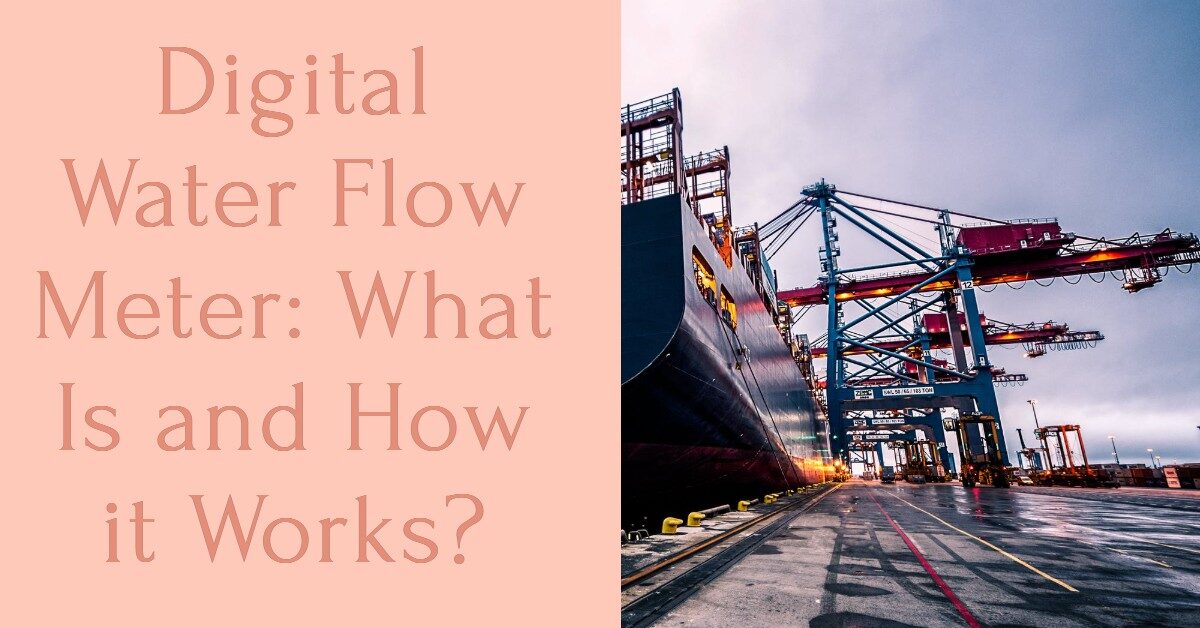Flow meters are an essential part of an industrial setting. They are used to specify liquid or gas flow rates. Digital flow meters work the same way but make it easy for you to grasp the data output. In general, flow meters are placed onto a pipe and measure the flow thanks to sensors. In other cases, the meter becomes part of the system, and fluid flows through it to measure. So it begs the question, what are digital flow meters, and how do they work? This article highlights these points and more.
What are Digital Flow Meters?
Digital flow meters show the flow output on a digital display. This output is very easy to understand and interpret. The specifications are also easy to set.
How It Works
The main feature of a digital flow meter is the digital display. As the meter measures the flow rate in the pipes, the digital display shows readings in measurement units that are clear and simple. Not only does it provide easy-to-read scopes but also an accurate look at the slow rates.
Digital flow meters are becoming a norm in most industries because they can be found in any type. They are powered by an external source and not the pressure and temperature in the pipes. This poses a benefit as well as a drawback. The advantage is the precise readings, and the flaw is the need for an endless power supply. Another drawback is the cost. Digital flow meters are very much more expensive than traditional flow meters. The more sophisticated the digital meter, the more the cost.
Types of Digital Flow Meters
Just like their analog counterparts, digital flow meters come in different types. Below are the most common types.
Digital Mass Flow Meter
Mass flow meters display the rate of flow in mass, volume, temp, and pressure. This type of digital flow meter is reliable as it provides accurate quantity. In case of adjustments, the digital panel plays an important role. Anyone can change the input variables.
There are two types of digital mass flow meters: Coriolis mass flow meter and Thermal mass flow meter.
Digital Volumetric Flow Meters
As the name suggests, this meter measures the volume of the matter flowing per unit in a period. Be it gas or liquid. In essence, volumetric flow meters measure the speed of flow rather than volume. This speed is later converted to volume. There are several volumetric flow meters. Examples include Positive displacement flow meters and turbine flow meters.
Benefits of Digital Flow Meters
Digital flow meters have gained popularity due to, in part, their benefits. Below are some of them.
- Digital slow meters are easy to read since the digital display shows the readable output.
- Digital flow meters provide reliable measures since they do not depend on the pressure and temperature of the flowing medium.
Drawbacks Of Digital Flow Metres
There are a few drawbacks to digital flow meters.
- It depends on the external power supply. This means increased consumption of power and overall cost operation.
- It is also costly compared to manual slow meters. You will have to spend upward of $500 to get a worthy digital flow meter.
- Another drawback is plugging in. There have to be adjustments in the area to have enough power supply area for the numerous flow meters.
Conclusions
The digital water flow meter is here to stay. Not only are they gaining ground in industries but also in our homes. In pools and irrigation systems. The efficiency and reliability this flow meter provides are just what any working system needs.


